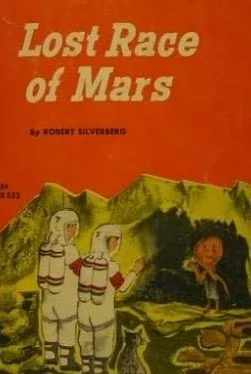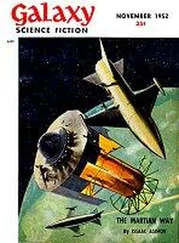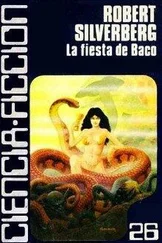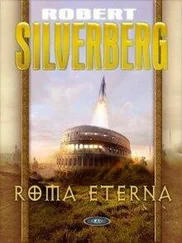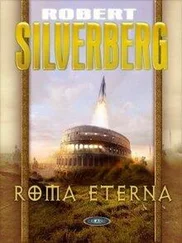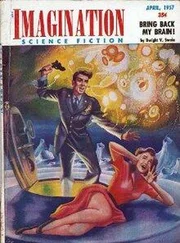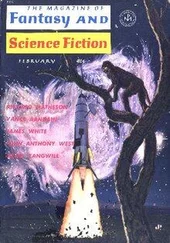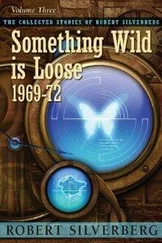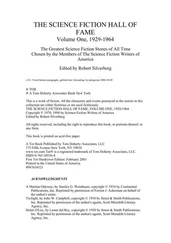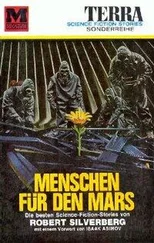Choking back his anger, Jim said, “Well, maybe those ruins are old stuff to you, but they aren’t to me. I’m looking forward to going there.”
Ted Navarra laughed. “Little Earth boy has to run around and see all the sights, huh?”
“Well, wouldn’t you?” Jim retorted. “Have you ever been to Earth?”
“What does that have to do with it?”
“Answer me,” Jim demanded.
“Of course I haven’t been to Earth,” Ted replied proudly. “I’m a native-born Martian.”
“Well, suppose you did go to Earth,” Jim went on. “Wouldn’t you run around seeing the Empire State Building and the Grand Canyon and all the other sights? I’ve seen them. So has my sister. But you—”
“I wouldn’t care,” Ted said. “What’s so interesting about a big building? Or a bunch of rocks?”
“You don’t even know what a mountain is,” Jim scoffed. “The biggest mountain on Mars isn’t more than a hundred feet high. You can’t even imagine what a real mountain is like!” [Hmm, what about Mons Olympus?]
“Listen, Earth boy,” said a new voice, belonging to Don Bruce. “Why can’t you just sit quiet and eat your lunch? Why do you have to make trouble? What are you doing on Mars, anyway?
Besides using up food and air, I mean.”
Tightly, Jim answered, “We’re here because my father’s doing important scientific research, and you know it.”
“Important scientific research!” Don repeated mockingly. “Poking at sand spiders and desert turtles! What’s he going to learn from them that’s worth having four freeloaders here for a full year?”
“Maybe not much,” Jim admitted. “But wait till he finds the old Martians—”
“ What ?” half a dozen others asked at once.
“Are you serious?” Judy Domanig smirked.
“The Old Martians are still alive, somewhere,” Jim said slowly. “You people have been too busy building your colony to look for them, that’s all. But my father’s going to find them, and when he does—”
“The Old Martians have been extinct for five or ten thousand years,” Ted Navarra said confidently.
“You do you know?” Jim shot back. “Have you searched every inch of the desert for them? In the early days of the colony some people saw the Old Martians lurking outside the dome, and
—”
Done Bruce interrupted, “Don’t tell us that, Earth boy. Those stories are just myths the old people made up to amuse their kids. The Old Martians are extinct.”
“I say they’re not!” Jim shouted. “I say my dad’s going to find them, too!”
“You think you know a lot?” Ted Navarra taunted. “You think you’re pretty smart? Well, let me tell you something. You’ve only been here a week. Most of us have lived on Mars our whole lives. And you’re trying to tell us about our planet? You don’t know a thing.”
Jim knotted his fists. Sally, who had been silent through the whole argument, kicked him below the table, reminding him to keep his temper. For a moment it looked as though there might be an ugly scene. Then the gong sounded, ending the lunch period and signaling the return to classrooms.
As they filed out of the cafeteria, Jim said, “I guess I was wrong for opening my mouth. But I couldn’t sit there listening to them sound off any more!”
“Don’t let them get under your skin,” Sally whispered. “They think they’re big shots just because they’ve been here longer that we. But just wait. We’ll show them. I know we will!”
The next morning after breakfast Jim and Sally and their parents took the elevator to the surface level and headed, as arranged, for Air Lock Four. There they were met by a young man who had agreed to be their guide to the Old Martian ruins.
He was a lanky, heavily tanned man in his early twenties who was studying to be an engineer.
More than half the students at the tiny Mars Colony University were studying engineering.
Many of the rest were medical students. A handful studied law, but only on a part-time basis.
The single court of Mars Colony had so little activity that the profession of lawyer was not a popular one on the red planet.
Their guide’s name was Martin Huber. He was not a native-born colonist, but had come to Mars with his parents when he was only six.
“Everyone ready?” Martin asked. “I hope you’ve got our lunches in those bags, Mrs. Chambers.
You’ll find breathing suits in those lockers. Just take any one that fits. Our sand-crawler is already outside the air lock.”
Jim and Sally found breathing suits marked “medium” and climbed into them. Martin Huber made a quick check to make sure the suits were properly sealed. Then he gave a signal to the men on duty at the air lock. The inner shutter swung open, and the five of them stepped through into the compartment that led to the outside of the dome. A moment later they emerged into the desert.
Over his suit radio, Martin said, “The temperature is only about twenty-five degrees. It’ll get warmer as the day goes along, but be sure to turn up your heating controls for now. The sand-crawler’s parked right over there.”
The vehicle was very much like the one that had ferried the Chambers family from the spaceport to the dome, except it was much smaller. It held only six, instead of eleven. But the design was the same, with tractor treads in the front and wheels in the back to help propel it through the shifting sand.
They loaded the food in first. By making a request the night before, Mrs. Chambers had been able to get some packed sandwiches for the excursion from the community mess hall. Then they all stepped in, and Martin turned on the motor. The sand-crawler was sealed tight, in case a sandstorm came up suddenly. To be doubly safe they kept their breathing suits on.
The nearest Old Martian caves were about ten miles north of the colony. Martin drove slowly and carefully. There was no real road, but the fierce wind and tumbling sand had worn every hill flat over thousands of years and there were no obstacles. A few rocks studded the desert, sturdy boulders of incredibly brilliant colors—blues and reds and greens—that had somehow resisted the constant weathering process. Occasional larger bluffs jutted up in the distance.
Here and there the runty Martian “trees,” two or three feet high, thrust upward from the sand.
“Those trees are thousands of years old,” Martin said. “Only a little bit of them shows above the sand, but each one has roots going down thirty or forty feet. It’s the only way they keep from being blown away in sandstorms.”
A few miles from the colony they came upon a small cliff about fifty feet high, fantastically contoured and sculptured by the wind. The exposed rock had a glittery look that indicated the presence of mica. The colors, again, were brilliant. Dr. Chambers asked Martin to stop, and got out to take some photographs. Then they continued onwards.
A few minutes later they reached a point where, by looking to the left, they could make out the bed of one of Mars’ dry “seas.” The ground dipped unmistakably. Millions of years before, perhaps, a mighty lake had filled that depression in the ground. The only trace that remained, aside from the bed of the lake itself, was a fringe of green vegetation running off to the west.
“There’s an underground spring there,” Martin said. “It isn’t more than a trickle, of course, and it’s deep under the surface. But it keeps the ground moist and that’s why there’s that band of vegetation going off over there.”
The sun had risen higher now, and was visible as a small, pale yellow disk in the enormously blue sky. The red sand of the desert took on a yellowish tinge in the sunlight. Everything seemed timeless, frozen as if in a dream. Nothing move on the desert.
Читать дальше
